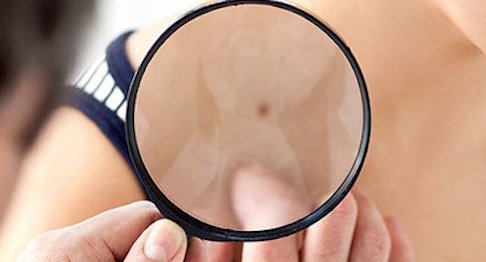
Scan the different types of skin cancer
If there’s one good thing about skin cancer, it’s that you can spot it yourself if you know what to look for. And the earlier you find the signs of skin cancer, the sooner you can seek treatment.
You already know that spending too much time in the sun without applying sunscreen can boost your chances of skin cancer but there are tons of other risk factors to keep on your radar, too. Getting just one bad sunburn, having fair skin or red hair, living at high elevations, flying frequently or driving a lot, exposure to certain chemicals, and having a family history of skin cancer can all spike your risk of the disease.
That’s why it’s so important to be vigilant, as skin cancer is very treatable if you catch it early. If your skin starts forming a spot that doesn’t look like anything else and it’s not getting better, it’s growing, or it’s acting differently than your other moles, get it checked out.
The Skin Cancer Foundation recommends doing a self-examination once a month.
The following pictures show what different types of skin cancer look like, as well as how to differentiate between them. Warning: They’re a bit graphic—but knowing how to spot a dangerous mole or lesion could save your life.
Basal Cell Carcinoma
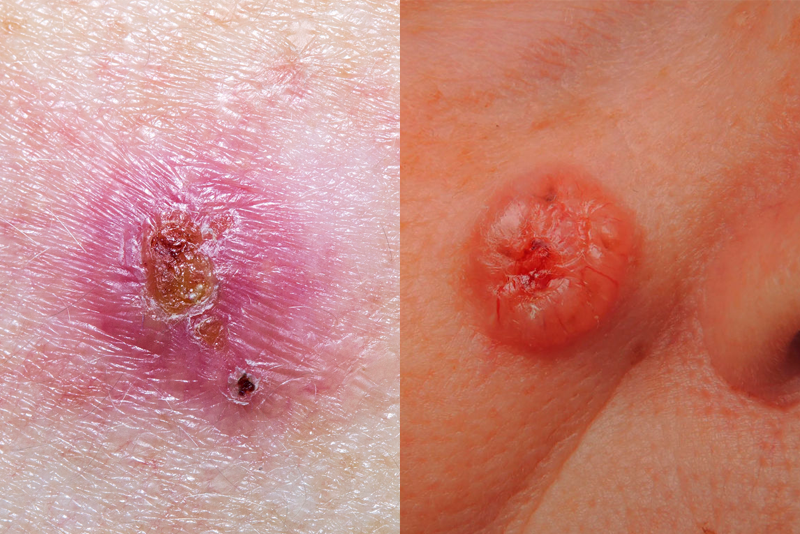
Basal cell carcinoma is the most common form of cancer. Basal cell carcinoma forms in basal cells, which are found in the top layer of your skin.
It can pop up anywhere, but most frequently occur in areas of the body that are often exposed to ultraviolet (UV) light. Even though it’s a common form of skin cancer, basal cell carcinoma tends to grow very slowly, rarely spreads to other parts of the body, and is very treatable.
Basal cell carcinoma symptoms: “Unfortunately, basal cell carcinoma is easy to ignore because a lot of times people think the spot is a pimple or blemish that won’t heal, especially on the face, neck, and ears.
Here are the various skin changes to look for:
- Flat, firm, or pale and yellowish areas that resemble a scar
- Pearly, translucent, or shiny bumps or spots
- Red or pink raised patches that may also itch
- Open scabs or sores that don’t heal or heal and come back
- Oozing or crusted areas that bleed easily
- Growth of a bump or lesion over time
It’s important to note that basal cell carcinomas are very sensitive and bleed easily after shaving or minor injuries. If what you think is a nick or cut doesn’t heal within roughly a week or you notice any of the changes above see your doctor.
Squamous Cell Carcinoma

Squamous cell carcinoma is the second most common type of skin cancer. These cancers form in squamous cells, which are the flat cells that constantly shed in the outer part of your epidermis.
Commonly appear on sun-exposed body parts, including the face, ears, neck, lips, and back of the hands. Although this type of skin cancer can spread to other parts of the body, this is not typical and squamous cell carcinoma is easy to treat when spotted early.
Squamous cell carcinoma symptoms: Similar to basal cell carcinoma, squamous cell carcinomas tend to manifest as a pink or red bump or patch that won’t go away, they’re not usually pearly or shiny.
It can also grow as a flat patch or become larger and nodular.
Here are other telltale signs to look out for:
- Rough or scaly patches
- Raised bumps that may have a lower area in the center
- Open sores or scabs that don’t heal or heal and come back
- Growths that look like warts
- Itching, bleeding, crusting, or pain
Melanoma
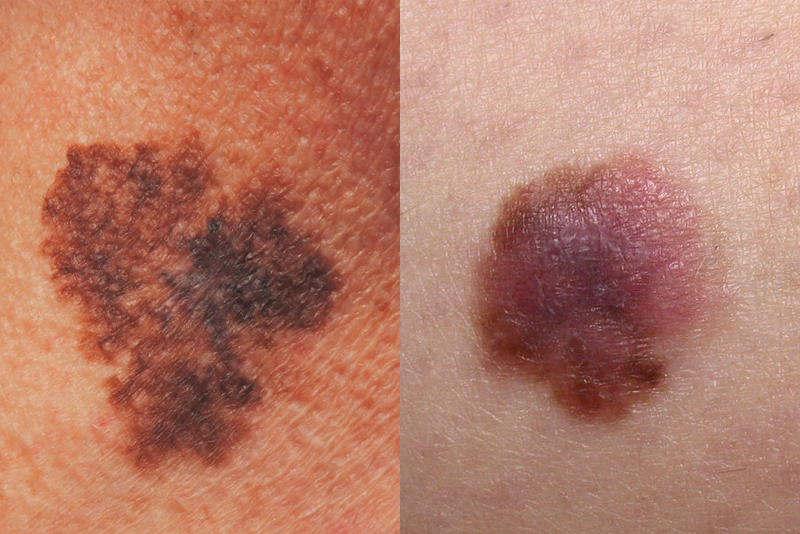
Melanoma is a rare form of skin cancer, but it’s the deadliest, since it easily spreads to other parts of the body when not caught early.
This type of skin cancer arises from the uncontrolled growth of a type of skin cell called melanocytes, which are responsible for producing pigment in the skin.
Melanoma symptoms: Using the ABCDE method can help you spot signature skin changes that point to melanoma.
- Asymmetry: Melanoma lesions can appear asymmetric, whereas healthy moles are typically symmetrical.
- Border: Moles with irregular, scalloped, or poorly defined edges may be melanoma. Normal moles have nice, sharp, regular borders.
- Color: Melanomas tend to be multi-colored—black, brown, red, blue, or even no color at all. Healthy moles are typically one color or maybe two, but that color is evenly distributed. This isn’t so for a potentially dangerous mole.
- Diameter: If a mole is greater than 6 millimeters in diameter (about the size of a pencil eraser), get it checked out.
- Evolving: If you notice a spot that is changing in any way, size, shape, color, borders, texture, or if the spot itches or bleeds, see a doctor. For more visual examples, check out these pictures.
Actinic Keratosis
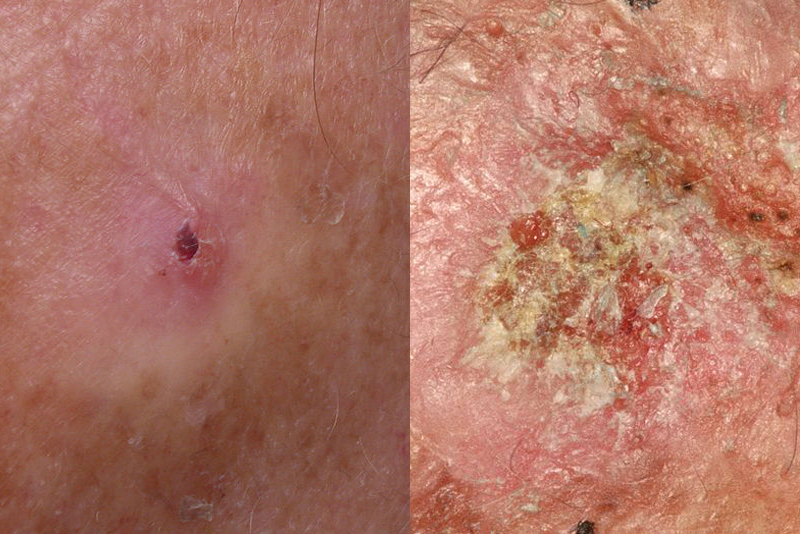
Also called solar keratosis, it is a pre-cancer or a premalignant lesion. It’s caused by too much exposure to UV light, and most people develop more than one affected area. Some (but not all) develop into squamous cell skin cancers, so it’s important to spot it before it advances.
Actinic keratosis symptoms: These lesions often occur on the face, lips, ears, back of the hands, and arms, but can form on other areas exposed to UV light. Here’s what to look for:
- Rough, dry, or scaly patches
- Flat or slightly raised patch on the top layer of the skin
- Itching, burning, or pain
- Varied pink, red, or brown tones
Merkel Cell Carcinoma
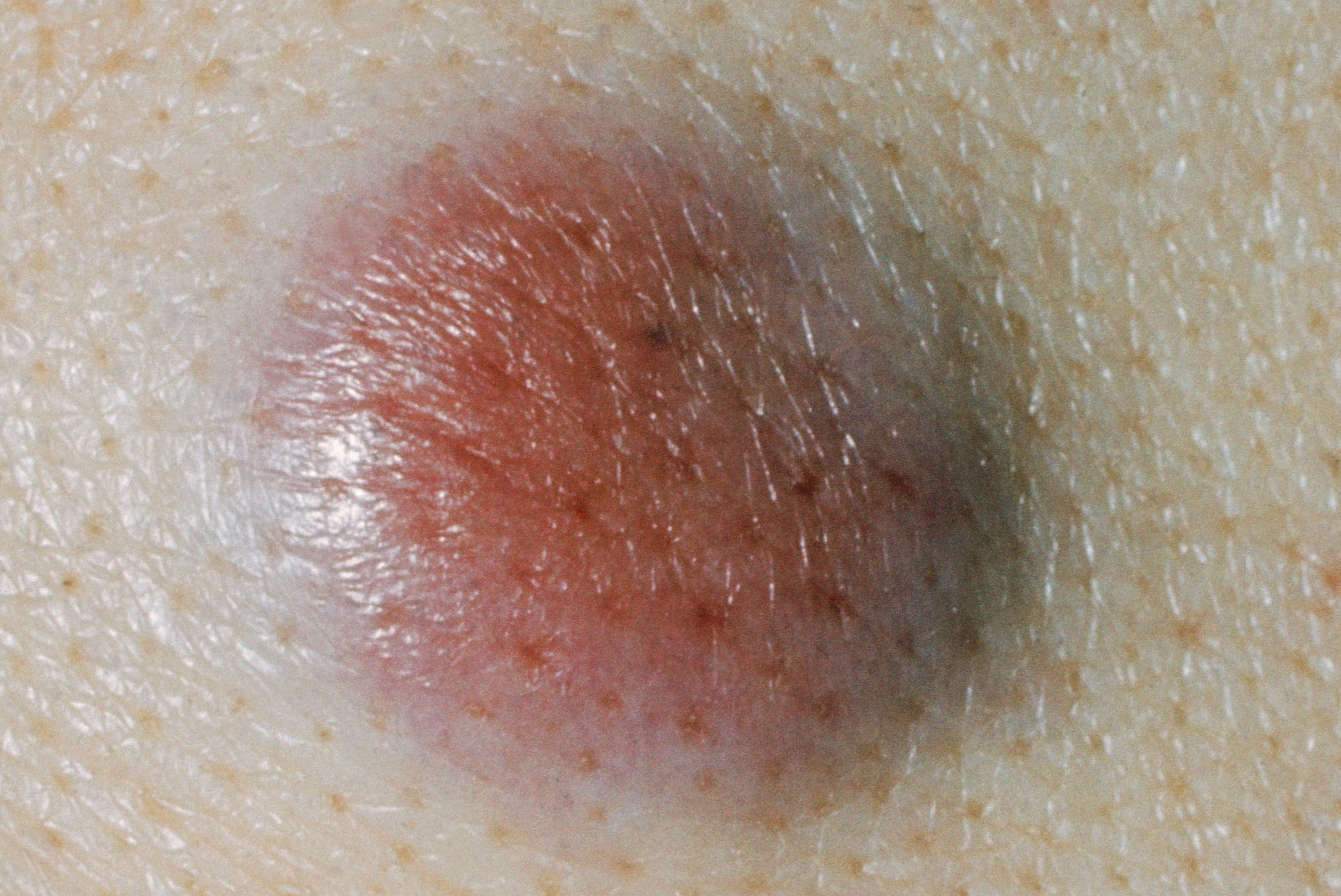
Although rare but dangerous forms of skin cancer, as it can grow rapidly and spread to other parts of the body.
This type of skin cancer (also known as neuroendocrine carcinoma of the skin) begins in Merkel cells, which are found in the epidermis. Since they’re so close to nerve endings, these cells play a role in our sense of light touch.
Merkel cell carcinoma most commonly impacts people over 70 years old, and men are nearly twice as likely to be diagnosed with it than women.
Merkel cell carcinoma symptoms: Merkel cell carcinoma is most common on the face, neck, arms, and legs, but can pop up anywhere on the body. While it can look like other types of skin cancer, there are a few characteristics to keep in mind:
- Pink, red, or purple bump that may be shiny
- Fast-growing, painless bump that’s firm to the touch
- Broken skin on top may break open and bleed
Related article: How to choose sunscreen : https://www.happinesswithout.com/how-to-choose-sunscreen/
 English
English Arabic
Arabic


